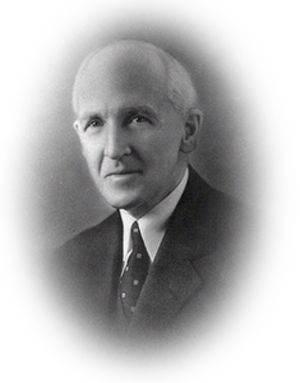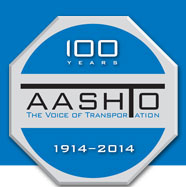
August 20, 2014
AASHTO Presidential Profile: Henry H. Blood of Utah

It is safe to say that Henry Hooper Blood of Utah was not the most charismatic or mesmerizing of individuals in the public spotlight. “He was an unassuming, shy man not given to rousing emotional speeches that would capture the imagination and hearts of the listeners,” according to a 1992 article of the Utah State Historical Society’s Beehive History magazine. “His voice was soft, his delivery somewhat pedantic and, to some, even preachy, perhaps a carry-over from his many years of church service.”
Nonetheless, Blood earned respect throughout a high-profile career that included serving as chairman of the Utah State Highway Commission and president of AASHO. Blood was elected president of the association at the annual meeting in Pittsburgh, Pennsylvania, in November 1930. He assumed leadership of AASHO at a time when state highway officials and more generally the entire nation were very much wrestling with the economic challenges of the Great Depression.
Blood was born on October 1, 1872, in the city of Kaysville, Utah. He attended local schools, and went on to study at what was then Brigham Young Academy (later part of Brigham Young University) in Provo, Utah. The son of a Kaysville city councilman, Blood was elected that city’s recorder in charge of public documents in 1893. He subsequently served as treasurer of Davis County, Utah, from 1896 to 1900. In 1901, Blood served as a clerk for the Utah State Senate. Blood, who had married his childhood sweetheart Minnie A. Barnes in 1896, also worked at one point for his father-in-law as a clerk for the Kaysville Cooperative.
Blood was an active member of the Mormon Church and, from 1901 to 1903, served as a missionary in England. (He later served back in Utah as bishop of the Kaysville Ward and president of the North Davis Stake.) After returning from England, Blood taught for one year at Brigham Young College in Logan, Utah. He made it back to his hometown in 1905, working as manager, secretary, and treasurer of the Kaysville Milling Company. Over the next decade-and-a-half, Blood further expanded his business interests. He was the director of three banks, two livestock companies, a sugar company, and a land company.
Blood also returned to public service during that time, serving on the Davis County School Board from 1909 to 1918 and the State Public Utilities Commission from 1917 to 1922. In 1922, he was appointed to the Utah State Highway Commission. He became chairman of that commission in 1925.
Blood sought to build on the progress that had been made on Utah’s highways network up to that time during the decade, which included surfacing the most heavily traveled routes and benefitting from a gas tax that kept road construction efforts solvent while reducing registration fees for motor vehicles. Blood’s tenure as chairman also encompassed efforts to maintain sufficient finances for roadwork and prevent diversion of that money to other state programs.
Blood also became a spokesman not only for Utah but other states in that region when it came to highway funding priorities. As AASHO president, Blood’s role on behalf of highways became more national in scope. “The year 1931 marks the high point of State highway endeavor and accomplishment,” he announced at the end of his term in an address at the association’s annual meeting in Salt Lake City in September 1931. “This year as never before has the organization nationally and in the States been placed under test. A year ago, when the President and the Congress turned to highway organizations as agencies of Government upon which they wished to place the responsibility of economically spending largely increased funds in record time, they made no mistake.”
As Blood further noted, “The added responsibility was cheerfully accepted and with little additional overhead the task was accomplished on schedule time.” To underscore that positive assessment, he read appreciative telegrams to AASHO from U.S. President Herbert Hoover and – as head of the federal agency overseeing public roads at that time -- U.S. Secretary of Agriculture Arthur M. Hyde.
Another major accomplishment during Blood’s time as AASHO president involved the association’s published work. In what Executive Secretary William C. Markham called “a banner year” for the association’s documents, AASHO went beyond just limited mimeograph copies to publish for the first time what would become two of its longtime and widely used books – the Standard Specifications for Transportation Materials and Methods of Sampling and Testing (The Materials Book); and the Standard Specifications for Highway Bridges.
After stepping down as AASHO president, Blood remained chairman of the Utah State Highway Commission until being elected the seventh governor of Utah in 1932. The considerable administrative experience and the contacts with local officials that he had made as commission chairman helped propel him into the state’s top job. As governor, Blood drew on the nationwide network of contacts he had cultivated as AASHO president to help maintain and improve his state’s highways system. Blood’s two terms as a Democratic governor were defined by his efforts across the board and not only when it came to highways to help Utah weather the ravages of the Great Depression.
With his second gubernatorial term ending in 1941, Blood declined to run for reelection. He moved to California after the Mormon Church appointed him president of its mission there. Blood, however, ended up back in Utah the following year due to health problems. He died in Salt Lake City on June 19, 1942, at the age of 69.












